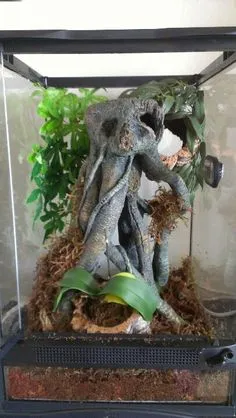Choosing the Best Tarantula Enclosure
Setting up a comfortable and secure habitat is essential for the health and well-being of your tarantula. The right enclosure provides the necessary space, ventilation, and environmental conditions for your eight-legged friend to thrive. This guide will walk you through the key factors to consider when choosing the best tarantula enclosure, ensuring your pet enjoys a long and happy life. From size and material to ventilation and decor, we’ll cover everything you need to know.
Size Matters
The size of your tarantula enclosure is one of the most critical factors. An enclosure that is too small can restrict movement and lead to stress, while one that is too large can make it difficult for your tarantula to find its food and feel secure. The general rule of thumb is to provide an enclosure that is approximately three times the tarantula’s leg span in width and length, and at least twice the leg span in height. This allows for ample space for movement, burrowing (if applicable), and the placement of essential items like water dishes and hides. Incorrectly sized enclosures can lead to molting problems and other health issues, so this is a critical factor to consider.
Growth Stages and Enclosure Size
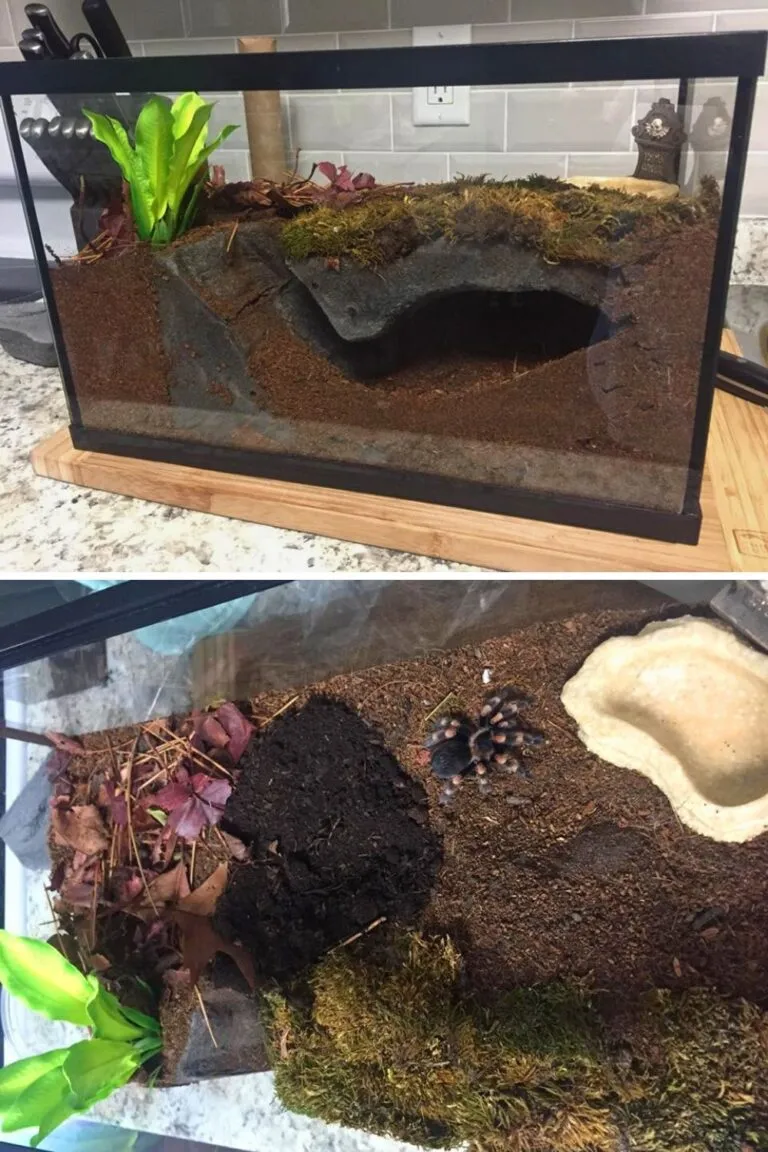
When you first get a baby tarantula (sling), you’ll need a smaller enclosure. As they grow, you’ll need to move them to progressively larger enclosures. This staged approach prevents the tarantula from feeling overwhelmed in a space that is too large. For slings, a small deli cup or a specialized small enclosure designed for juveniles is usually sufficient. As they molt and grow, gradually upgrade the enclosure size. Keeping track of your tarantula’s molting frequency and growth rate is a good way to gauge when it’s time to upgrade the enclosure. Improper enclosure sizing can lead to various issues in your tarantula’s health.
Adult Tarantula Enclosure Requirements
Adult tarantulas require larger enclosures to accommodate their size and activity levels. Ensure the enclosure has secure ventilation, a proper substrate depth for burrowing species, and sufficient space for the tarantula to move around comfortably. A good adult-sized enclosure provides ample space for enrichment items such as hides, branches, and artificial plants. Consider the species-specific needs of your tarantula, such as their preferred burrowing depth, humidity requirements, and temperament. A well-designed adult enclosure is key to their long-term health and well-being. Larger adult tarantulas may also benefit from a larger water dish to stay hydrated.
Material Matters
The material of your tarantula enclosure plays a significant role in its overall suitability. Common materials include glass and acrylic, each with its own advantages and disadvantages. Your choice of material will affect factors like visibility, heat retention, and ease of cleaning. Consider the specific needs of your tarantula species and your personal preferences when making your decision. Both glass and acrylic enclosures are widely available, and both can provide a suitable habitat when properly chosen and maintained. The key is to understand the pros and cons of each material and choose the best fit for your circumstances.
Glass Enclosures Pros and Cons
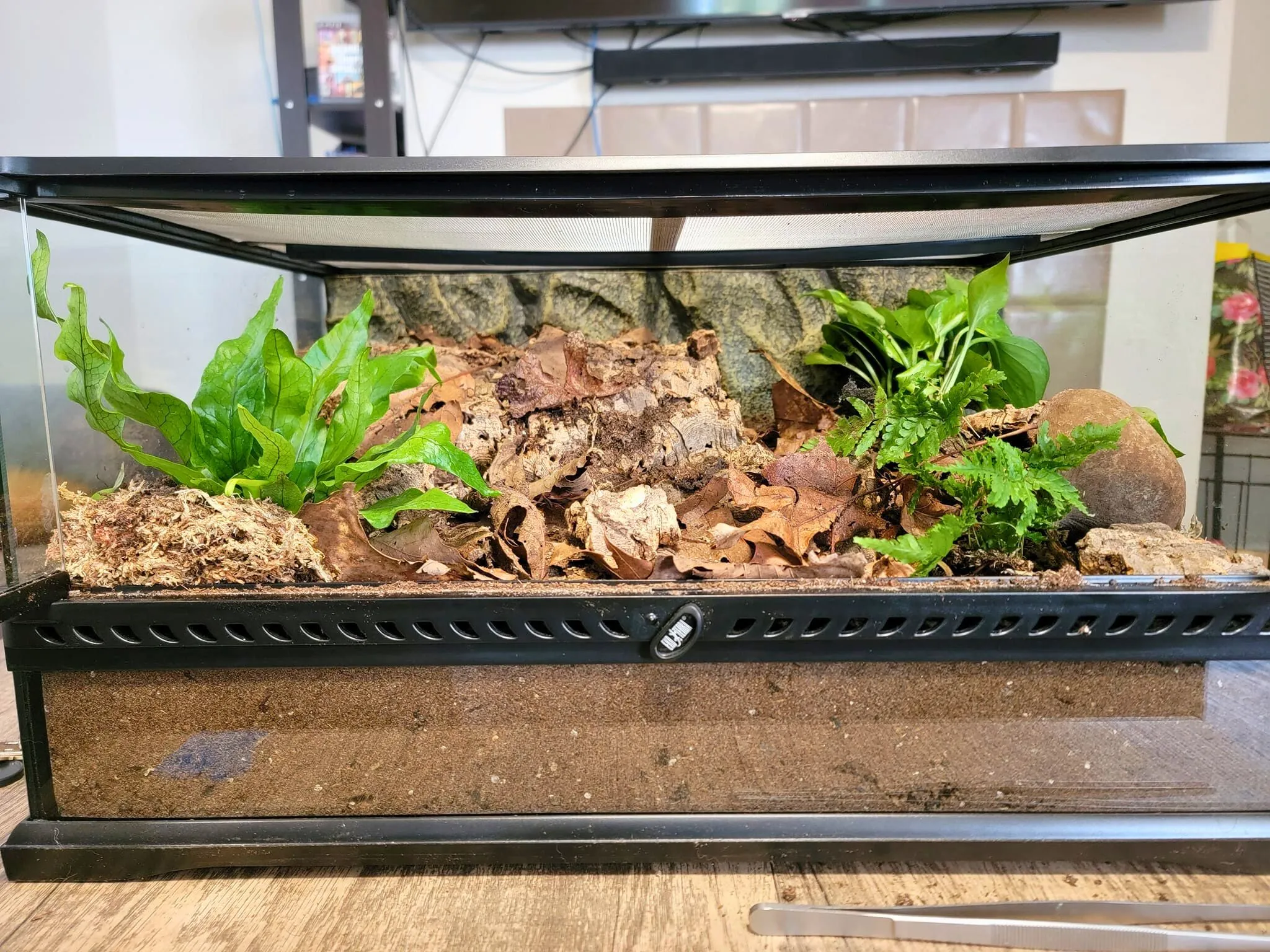
Glass enclosures are a popular choice due to their durability, transparency, and ease of cleaning. They offer excellent visibility, allowing you to observe your tarantula without distortion. Glass is also scratch-resistant and can withstand regular cleaning. However, glass enclosures can be heavy, and they don’t insulate heat as well as acrylic. They can also be more expensive. Proper ventilation is essential with glass enclosures to prevent condensation and maintain appropriate humidity levels. Make sure you select an enclosure that has adequate ventilation to provide proper air circulation and reduce the risk of mold. Always handle glass enclosures carefully to avoid accidental breakage.
Acrylic Enclosures Pros and Cons
Acrylic enclosures are lightweight, durable, and offer excellent insulation. They are also highly transparent and provide great visibility. Acrylic is less likely to break than glass, making it a safer option. However, acrylic can be prone to scratches, so it’s important to handle it with care. Acrylic enclosures tend to be more expensive than glass, but their insulating properties can help maintain a stable temperature and humidity environment. Ensure that the acrylic enclosure has proper ventilation to prevent the buildup of moisture and ensure adequate airflow. Regular cleaning with appropriate products will help prevent scratching and maintain clarity.
Ventilation is Key
Proper ventilation is crucial for tarantula health. It prevents the buildup of stale air, ammonia, and mold, and helps regulate humidity levels. Ventilation also helps maintain the correct temperature range. There are two primary types of ventilation systems: cross ventilation and top ventilation. The choice of ventilation type depends on your tarantula species and the specific enclosure design. A poorly ventilated enclosure can lead to respiratory issues, fungal infections, and other health problems for your tarantula. Always prioritize a well-ventilated enclosure setup. Inadequate ventilation can create a breeding ground for mold and bacteria, which are harmful to your tarantula.
Cross Ventilation
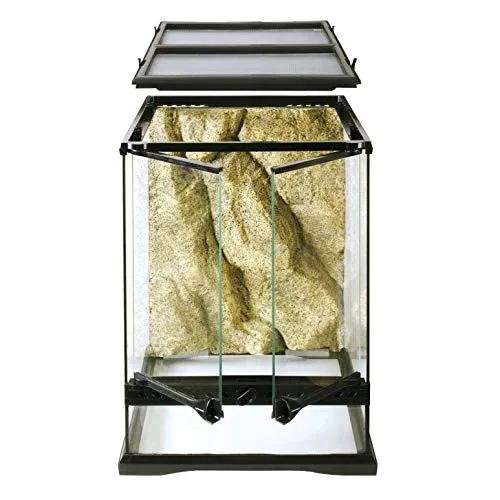
Cross ventilation involves air flowing horizontally through the enclosure, typically with vents located on opposite sides. This setup promotes excellent airflow and helps maintain a consistent temperature and humidity level throughout the enclosure. Cross ventilation is particularly beneficial for species that prefer drier environments. Always ensure the vents are properly sized to prevent escapes while still allowing for adequate airflow. Regularly check the vents to ensure they are free from obstructions. The placement of the vents is also essential; usually, one is placed at the top, and the other on the side, or in the middle, to enhance airflow.
Top Ventilation
Top ventilation involves vents located on the top of the enclosure. This setup can be effective, but it requires careful monitoring to prevent excessive humidity buildup. Top ventilation can be suitable for species that require higher humidity levels. In these cases, you need to make sure there is enough airflow to prevent condensation. Always observe your tarantula and enclosure conditions to ensure the ventilation system is working effectively. Ensure the lid is securely fastened to prevent escapes. You might also need to add additional ventilation holes or adjust the vent size to optimize the humidity level inside the enclosure.
Substrate and Decor
The substrate and decor you choose will provide your tarantula with a comfortable and enriching environment that meets their specific needs. Substrate is the bedding material at the bottom of the enclosure and it is critical for humidity regulation, burrowing (for burrowing species), and providing a natural environment. The decor adds enrichment and can include hides, artificial plants, and other items that provide climbing opportunities and security. The combination of substrate and decor creates a stimulating and safe environment for your tarantula, contributing to its physical and psychological well-being.
Importance of Substrate
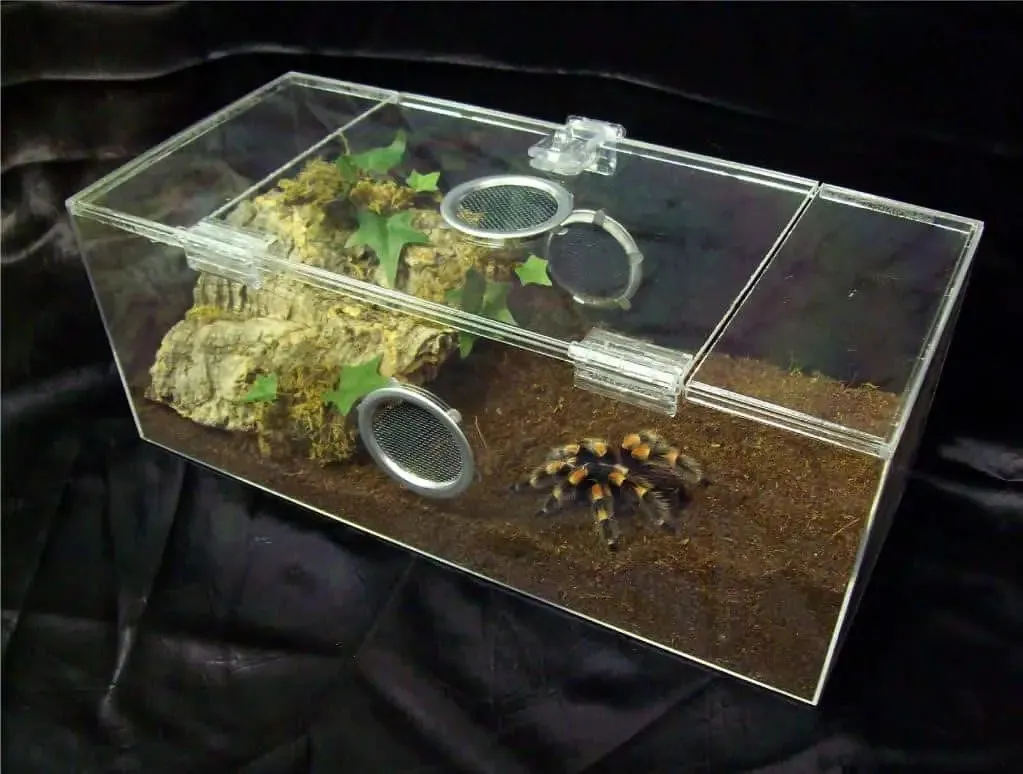
The substrate plays a crucial role in maintaining appropriate humidity levels, which are critical for your tarantula’s health. It also allows burrowing species to create tunnels and burrows, providing a sense of security and enrichment. The choice of substrate depends on the species’ needs, but common options include coconut fiber, peat moss, and vermiculite. Make sure the substrate is clean, non-toxic, and free of any harmful chemicals. Regularly monitor the substrate’s moisture level and replace it as needed to prevent mold and bacterial growth. The substrate also helps with temperature regulation, providing a stable environment within the enclosure. Always pick substrate that is specifically designed for reptiles and invertebrates.
Enclosure Decor Ideas
Enrich your tarantula’s enclosure with decor that offers hiding places and climbing opportunities. Cork bark, artificial plants, and sturdy branches provide excellent enrichment options, creating a more naturalistic environment. Hides are essential, as they provide security and allow your tarantula to feel safe. Artificial plants not only add visual appeal but also help maintain humidity levels. Be sure to choose decor that is non-toxic and free of sharp edges. Arrange the decor in a way that allows your tarantula to move around freely while also feeling secure. The right decor enhances the visual appeal of the enclosure and provides mental stimulation for your tarantula. Avoid placing anything that could potentially injure your tarantula.
Top 5 Tarantula Enclosure Recommendations
Here are five of the best tarantula enclosures currently available, each selected based on material, ventilation, and overall design, and suited for different tarantula needs.
Enclosure Recommendation 1
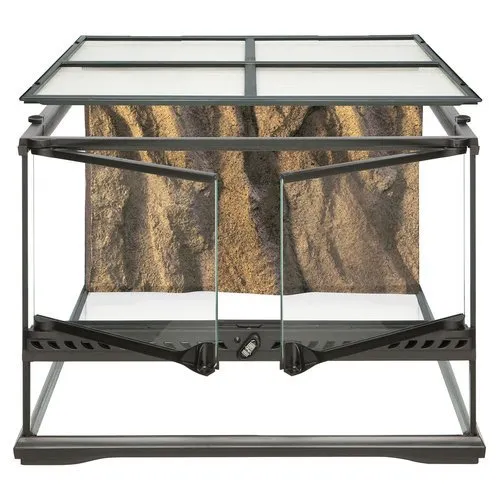
Consider the Exo Terra Glass Terrarium. This is a great all-around enclosure, available in several sizes, featuring excellent ventilation, and easy access for maintenance. It’s suitable for many terrestrial species.
Enclosure Recommendation 2
For arboreal species, the Zilla Vertical Terrarium is a good choice. It provides a vertical layout that mimics the natural habitat of arboreal tarantulas, allowing them to climb and explore.
Enclosure Recommendation 3
The Sterilite 1884 is ideal for beginners or those on a budget. It’s a simple, clear plastic container that is easy to modify for ventilation and is a cost-effective option for slings and juveniles.
Enclosure Recommendation 4
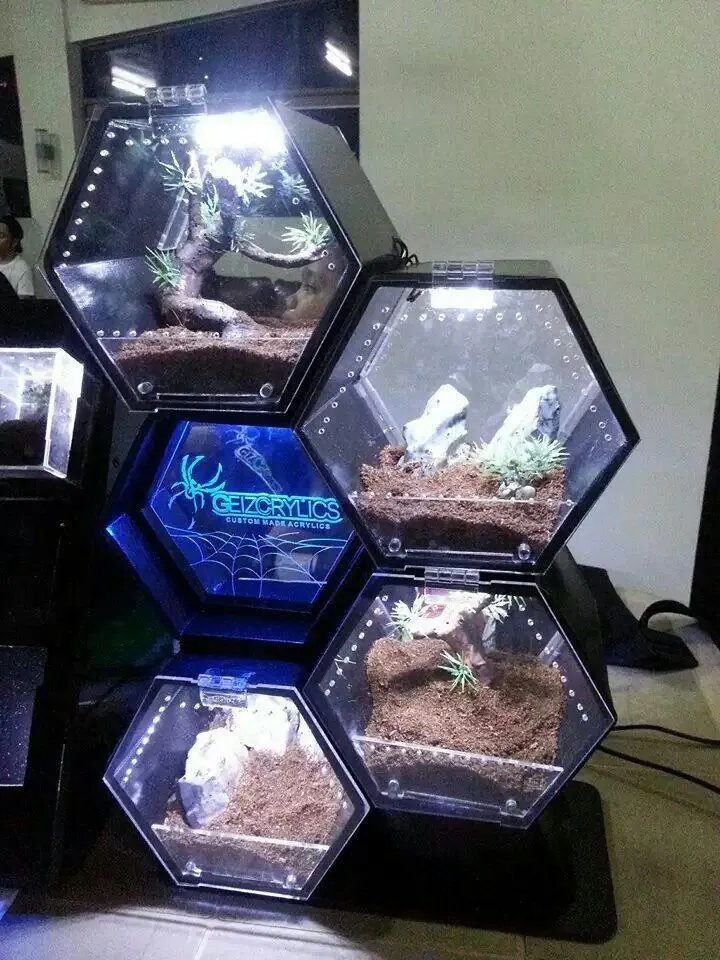
For advanced keepers or species requiring specific environmental control, consider a custom-built acrylic enclosure, allowing you to tailor the size, ventilation, and features to meet your tarantula’s exact needs.
Enclosure Recommendation 5
The Repti Zoo Glass Terrarium offers a blend of style and functionality, with secure locking lids and excellent ventilation. This enclosure provides a secure and aesthetically pleasing environment for your tarantula.
Maintaining Your Tarantula Enclosure
Regular maintenance is essential for keeping your tarantula’s enclosure clean, healthy, and safe. This involves cleaning, monitoring humidity and temperature, and making adjustments as needed. A consistent maintenance routine prevents the buildup of waste, mold, and other potentially harmful elements. Good enclosure maintenance also promotes the overall well-being of your tarantula, helping it thrive in its captive environment. Proper maintenance will ensure your tarantula lives a long and healthy life.
Cleaning and Maintenance Schedule
Establish a regular cleaning schedule to keep your tarantula’s enclosure in top condition. Spot-clean the enclosure daily, removing any uneaten food, molted exoskeletons, and feces. Once a month, perform a more thorough cleaning, which includes removing and replacing the substrate. The frequency of cleaning may vary depending on the size of the enclosure, the number of tarantulas in the enclosure, and the species. Make sure to use appropriate cleaning solutions and avoid harsh chemicals that could be harmful to your tarantula. Always wash your hands thoroughly before and after handling the enclosure to prevent the spread of bacteria. Regularly inspect the enclosure for any signs of mold or infestation, and address them immediately.
Humidity and Temperature Control
Maintaining the correct humidity and temperature levels is vital for the health of your tarantula. Monitor the humidity and temperature regularly using a hygrometer and thermometer. Adjust the ventilation, substrate moisture, and heating as needed to maintain the correct environment. Misting the enclosure with dechlorinated water can help increase humidity, especially for species that require higher levels of humidity. Providing a shallow water dish will also assist in humidity management. Use a low-wattage heat source, such as a heat mat or ceramic heat emitter, to maintain the appropriate temperature, if needed. Be very careful not to overheat the enclosure, as this can be deadly. A stable and appropriate environment is crucial for successful molting and overall health.
Conclusion
Choosing the right enclosure is a critical step in providing a happy and healthy life for your tarantula. By considering factors such as size, material, ventilation, and decor, you can create an ideal habitat that mimics your tarantula’s natural environment. Remember to research the specific needs of your tarantula species, and be prepared to adjust the enclosure setup as your pet grows. Regular maintenance and monitoring are essential for keeping the enclosure clean, safe, and comfortable. With the right knowledge and preparation, you can provide your tarantula with a thriving home for many years to come. Always prioritize the well-being of your tarantula, and enjoy the rewarding experience of caring for these fascinating creatures.
